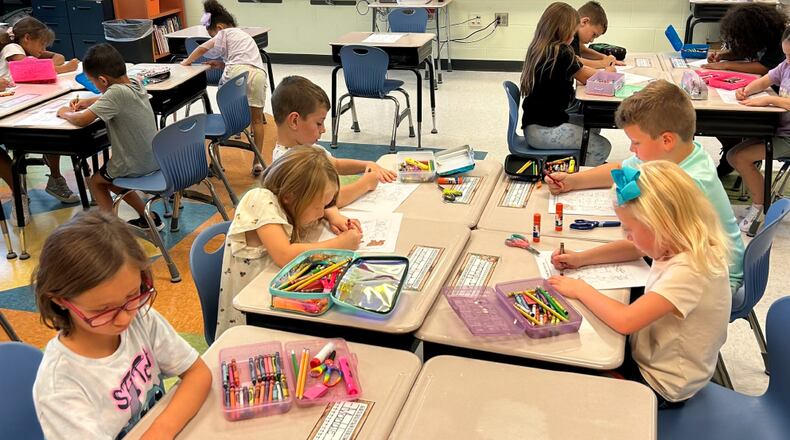Overall, Hamilton received 3.5 stars from the Ohio Department of Education, which is in its second year of using the star-rating system instead of a letter grade.
Though there are good and bad scores when looking at Hamilton’s overall report card from the Ohio Department of Education, Superintendent Mike Holbrook said the biggest two measurements his administration has focused on ― Progress and Gap Closing ― are seeing year-over-year improvements.
“Every year for the last seven years, Hamilton City Schools has continued to improve to the point that we are now competitive with districts that we weren’t competitive with before,” said Holbrook.
The district met state standards in Achievement, Progress and Gap Closing, exceeding the standards in the latter two categories.
“Achievement is always a bit of a challenging metric for us because as kids come to us,” he said. “There are a group that come to us behind, and we do so focus on achievement, but the bigger piece we focus on is progress.”
Progress shows how much educational growth a student sees over the course of a school year. Traditionally, a seventh-grader should be ready for the eighth-grade by the end of that school year. But there are many kids not ready for the grade they’re entering.
“We really have placed a huge emphasis on Progress, which is growing a kid more than one academic year, and as you can see on the state report card, you can really see where we emphasized that,” he said.
The Gap Closing category shows how well a school is meeting the performance expectations of students, among other categories, such as reducing chronic absenteeism and identifying gifted students. The state said they are exceeding state standards in closing the gap between the highest-performing and the lowest-performing students.
They have focused on the district’s English Language Learners and special education students, which are populations of the student body that tend to fall behind.
Hamilton has come a long way since the 2015-2016 school year when the Ohio Department of Education said none of the city school buildings met state standards. Holbrook, who was named Hamilton superintendent in 2019, said the eight elementary schools, the two middle schools, and the high school received either a “D” or an “F.”
This year, Holbrook said every single Hamilton City Schools building met or exceeded state standards.
“All 12 of our buildings. That’s real significant,” he said.
Also, this year, among the four largest school districts in Butler County, Hamilton is right there with Fairfield and Lakota receiving 3.5 stars out of 5. Middletown received 2 stars.
“We’re staying pretty competitive with our four big districts that are demographically a little more similar to us because of size,” Holbrook said. “And for us to be able to compete with Lakota says an awful lot about our teaching staff and our administrators and the hard work that everybody’s put in.”
Ohio also compares districts to the 10 most similar in terms of socio-economic status and demographics, and all were at 2 or 2.5 stars, with Springfield City School District in Clark County being the “most comparable.”
“We are well ahead of the curve with every single one of those districts,” he said.
The district’s biggest challenge is how graduation rates are calculated because they take into account the graduation of the district’s alternative school, The Miami School, which can see students take five or even six years to graduate.
Overall, the district’s graduation rate is 82%, which is actually the class of 2022, Holbrook said.
Hamilton City Schools several years ago elected to open an alternative school, and some of those students have various challenges and take a longer time to graduate. But Holbrook said if they take longer than five years, they aren’t calculated in the state’s graduation rate metric.
Hamilton High School had more than 97% of its senior students graduate in 2022, and in 2023, which will be part of next year’s state report card, just more than 99% of Hamilton High School. When The Miami School is calculated, that rate should jump to around 88%.
“We’re seeing improvements, even with our kids in the alternative school,” Holbrook said. “We continue to work with those students because we know how important it is to walk out with a high school diploma.”
While there are a lot of things measured in the state report card, it’s not the end-all-be-all of educational standards. Holbrook said “not everything that is measured is important and not everything that’s important is measured. There are things that we do every day that aren’t measured.”
One example is experiential learning opportunities, such as when the high school band, over the last decade, traveled to national competitions in Indianapolis or had the opportunity to travel to Pearl Harbor.
“There are learning experiences that are outside the classroom, and I don’t see that measured on the state report card, but we continue to emphasize experiences with our students and getting them out there. I think that’s a really important piece,” he said. “I think that’s how a lot of us learn.”
About the Author


